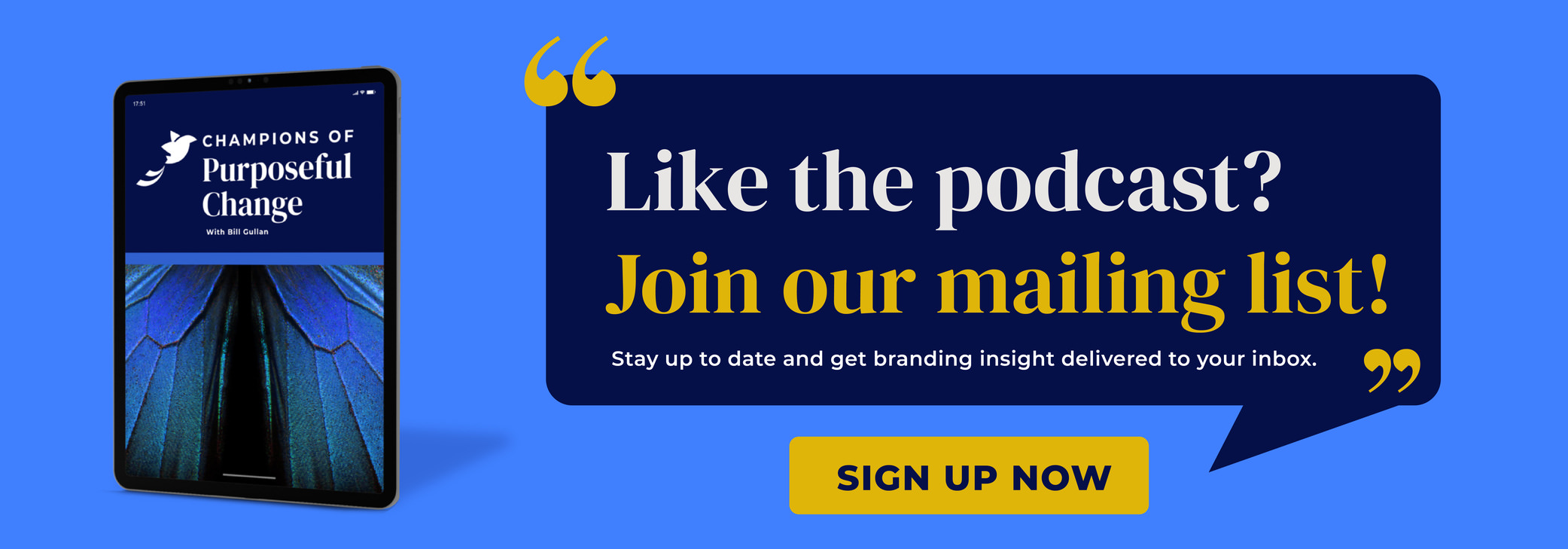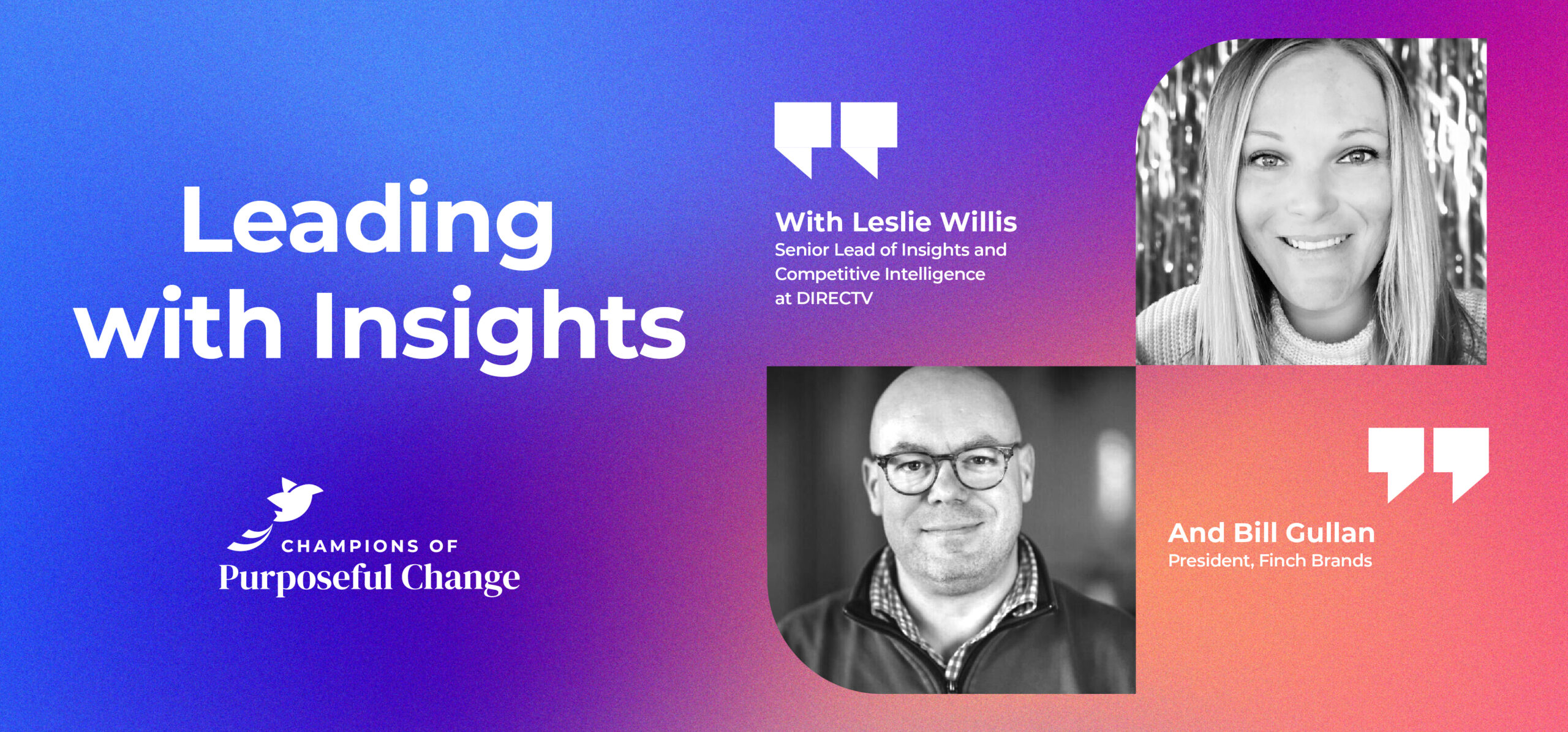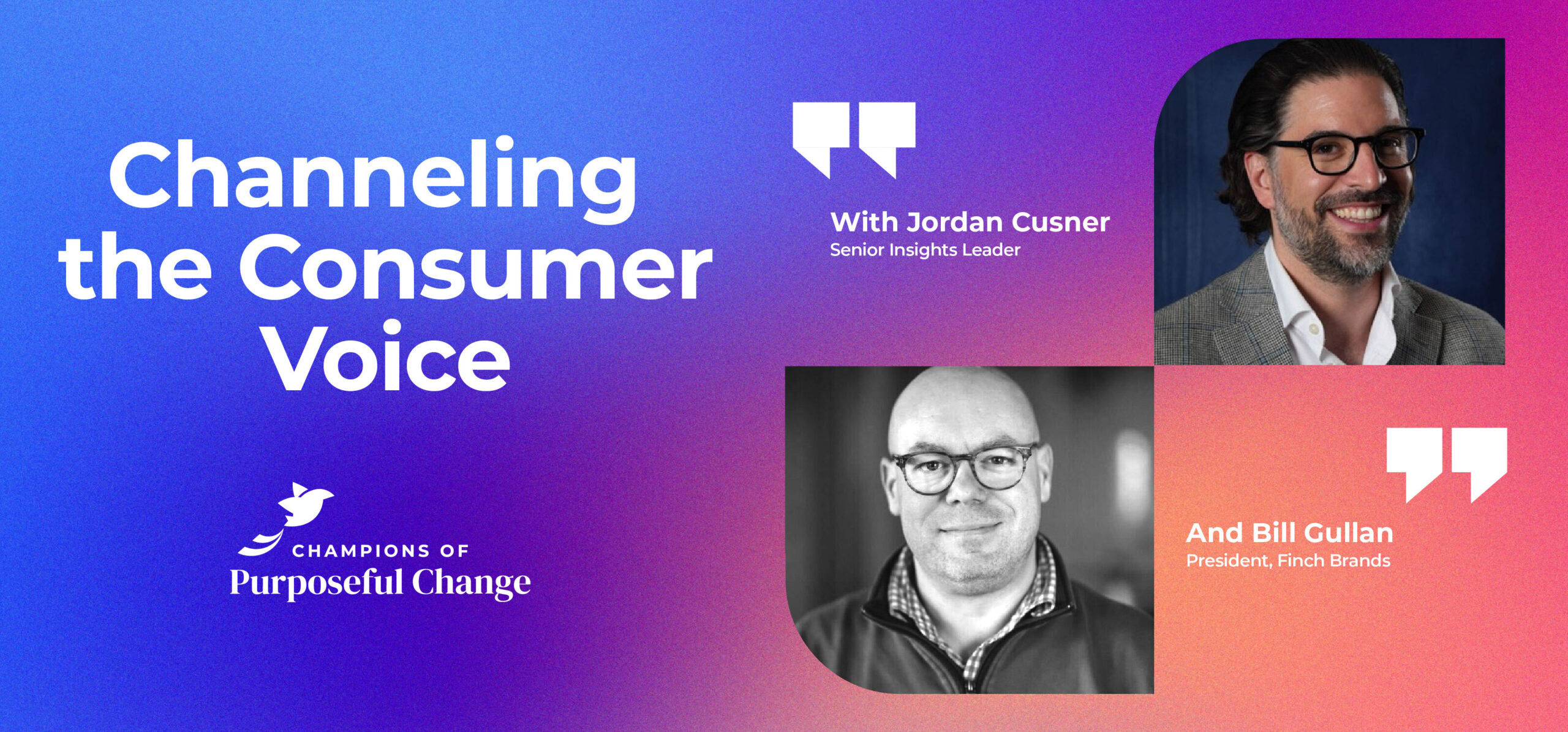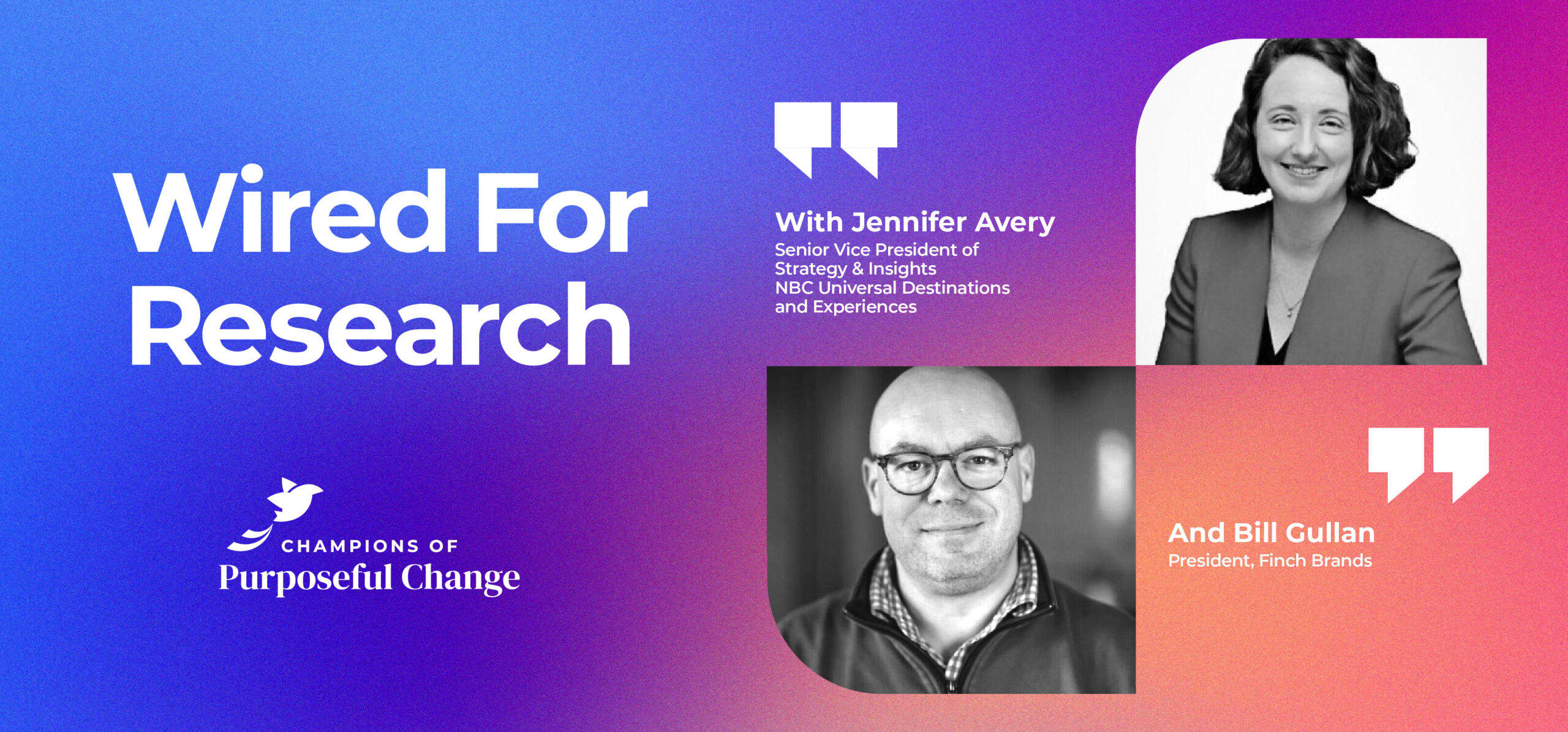One Big Idea: Talking to Robots
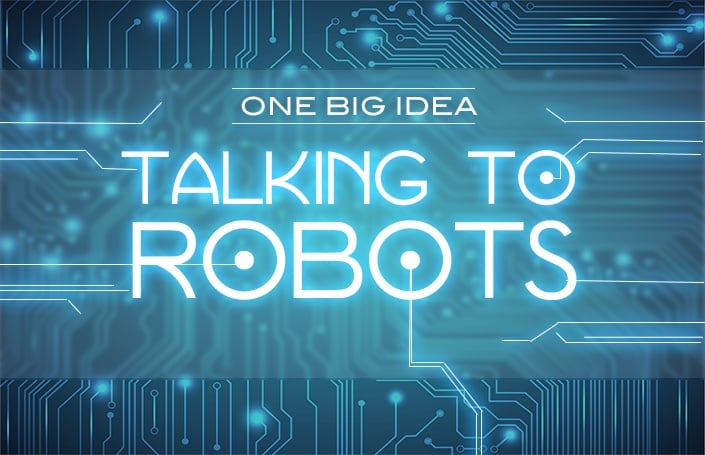
In this week’s episode, we sit down with Josh Rosen, VP of Brand Strategy at Finch Brands and master of all things digital, to review Mary Meeker’s annual Internet Trends Report. Among the trends she highlights, we cover those that are most pertinent to brands and businesses including, the rise of voice search, increasing movement back to brick and mortar, consumer device preferences, and many others. If you like our podcast, please subscribe and leave us a rating!
Podcast: Download Subscribe: iTunes | RSSTranscription
Bill: Greetings, one and all, this is Real-World Branding. I’m Bill Gullan, President of Finch Brands, a premiere boutique branding agency, and this is One Big Idea. This week, we’re going to talk about, and we’re certainly not the first to talk about it – it’s become a pretty big deal every year, which is the Internet Trends Report.
Mary Meeker, formerly of Morgan Stanley, I think, and now, of course, of Kleiner Perkins, a preeminent analyst and venture capitalist, comes out once a year with this trend report. It’s been out in the last couple weeks; it’s dense; it’s two hundred some slides in a deck. It’s covering the world of technology from a lot of different angles. In order to extract some of the wisdom for brand builders and marketers from this, we’re bringing Josh Rosen to bear today. Josh, welcome.
Josh Rosen: Hello.
Bill: Josh is Vice President of Brand Strategy at Finch Brands. He comes to us after – and you can talk a bit about it – but the start of a career at Campbell Soup in a more traditional brand role, moved to Anheuser-Busch on the brand side, but moved quickly into digital for Budweiser and other brands. Then, even went further into the realm of 0’s and 1’s, at Amazon, a little brand some folks may have heard of in Seattle.
So we’re lucky to have him both at Finch and with us today. Josh, feel free to weave in any back story as we talk through this. We tasked Josh with the feat of extracting a couple of nuggets from here and from Mary Meeker’s report that we thought would be of particular interest to folks in our audience who are thinking about building businesses and brands with regard, specifically, for technology use.
Anything, Josh, that off the top caught your eye. We’re kind of the Cliff Notes folks here. I’d love to hear your overall take.
Josh: Sure. Well, you know, it’s always a fun report for me to read. I was a brand manager, self-taught digital, but was able to move in that world and really experience it. I’ve always found that a lot of the benefit of technology, really as a consumer or as a marketer, is very early on. You get a lot more surplus if you’re in on something, and a lot more benefit before it becomes saturated and busy.
This is always a report I look forward to. I think the big thing that jumped out – she always gives the global statistics on how big the Internet’s growing. This year it’s actually starting to slow down a little bit.
Bill: You think it’s going to catch on, the Internet?
Josh: The Internet?
Bill: I know a little bit about that. Yeah.
Josh: I think it’s got some potential, yeah. The Internet, mobile, all that stuff, there’s something there. The big theme that she really took some time on was the idea of voice search.
I think a lot about talking to robots really, and the Amazon Echo success of this past year – contrasting that to smartphones which are now a mature market. It used to be every year; it was all about smartphone penetration how it was growing in India, growing in China. It was going to eclipse the Internet – mobile is above fifty percent.
Now, mobile, still underspent as the report pointed out, marketers still have an opportunity there, but now those sort of devices, in the traditional way we thought about mobile, is changing and the Internet of Things is coming. One of the key features of that is this voice activated search notion.
She made some pretty big statements in terms of really how far she felt voice search could go and alluded to the idea of it getting to something like Echo getting to the level of an Amazon, or of Apple, or things like that.
Bill: That would be amazing. When we think about already seeing some consumer applications for voice, we’re in a Comcast area and the X1 remote, a big push for them around voice activated commands on your remote control. We certainly have that already with Apple TV and with some other things.
Any kind of, again rapidly coalescing here, but words of wisdom around possibilities for brands in that world? There’s noted, the earlier you get somewhere the more of a pioneer you are, obviously, potentially, the greater the benefit. What does this all mean for those who do what we do?
Josh: I haven’t actually been involved with trying to get in there, but I think Google and Android came out, and they mentioned in the report that one in five searches is now done via voice. I think it’s about getting ahead of it and making sure your content, and your mobile applications, and anywhere that people can interact with your brands, really making sure that you’re ready and that your content is optimized and you’ve got content that is useful.
The brands that I think hopped on Alexa, the Echo platform early and built skills for it that are getting some good attention. Domino’s built a pizza ordering app; Uber built an app. It’s gotten mixed reviews, but those brands are getting a disproportionate amount of attention. Again, that surplus, it is a messy marketplace on there right now, but there’s a few brands jumping out that are able to capture way more.
Just like when smartphones first came out, there were a few brands that were early into apps and really built themselves on being there first.
Bill: That’s interesting you say that because when it comes to being early, it seems like there may be a couple levels of benefit for brands. One is actually, obviously, the transactions that you can do using these new methods of communication. Beyond that, given how much coverage there is of these spaces and of technology, it seems like this is a way to burnish an innovation reputation, even if there are comparatively few eyeballs, or in this case, voice boxes that are being activated and pursued of interaction. It seems like there may be perceptual, as well as, business driven benefits.
Josh: Yeah. I think as you’re looking at your P&L, you have to think about it as much as, ‘Are you going to get your dollars back for it because this will take off?’ Or, ‘Could this be a PR thing that continues to brand you as an innovative brand?’
Domino’s is a great example of a brand who you can order via tweet; you can order pizza a gagillion different ways. They’ve really tried to put themselves at the forefront of whatever comes out. Generally, for most brands, that’s a favorable place to be.
Bill: Yeah, no question. One of the other things you mentioned that I thought was interesting, there was a little bit of a, contradiction is not the right word, but Meeker said in her report and you underlined that, because of the growth of smartphones tapping out, she still does believe that mobile media is underspent, but at the same time she made a strong point of warning that a lot of online advertising, especially video, is ineffective at this point.
We see so many brands but also media companies rushing towards video as a way to be differentiated and as a way to break through, take advantage of the fact that we want to consume media in a slightly new way. How do you help us untangle what seems to be a blurry, messy type of situation?
Josh: Well, she highlights in the report the leader who she feels like is doing video well right now, which is Snapchat. Best I can tell, and really the struggle with online video, is making it not interruptive for people.
Bill: Right, right.
Josh: That’s going to be a little bit of a sociological kind of learned thing, but you also have to think through the consumer’s experience, and where they want to see your ads, and what’s going to be interruptive versus what’s going to be complimentary to what they’re doing. That’s what’s really created the native ad marketplace and content marketing because people don’t just want to have a pure interruptive ad, like they do on TV.
They’re looking to integrate. I think this underscores it, but you also have to think about the different form factors you’re operating on. Snapchat has done a great job of creating a video ad format that is optimized for their app and is optimized for mobile. Which is an increasingly hard place to do any sort of video advertising because on the iPhone it takes up the whole screen.
Bill: Right.
Josh: On Google, it’s kind of playing small, but it’s not the type of place. You’re very one to one with the person; they’re pretty focused. We used to talk about this, with TV, there’s ‘lean back’ and ‘lean forward.’ If you’re on your mobile phone, you are leaning forward – it’s a fairly active activity compared to if you’re watching TV, you can zone out if a commercial comes on and things.
You really have to consider the form factor, as well as, just the experience of what getting your ad is like, so you can do well and obviously use targeting. The thing that’s come up that’s interesting is for a long time Facebook has thought of itself in a very dual nature. They have amazing targeting capabilities and great ability to target people, but now they’re getting to the point with some big brands in certain things where they have scale if somebody wants to pay. You have to really try to think about targeting and using targeting smartly. Maybe on some of the bigger platforms, even though it may be tempting, not necessarily throwing yourself in there unless you feel like you have a meaningful piece of content to share with consumers.
Josh: Yeah. We also don’t necessarily get charged if they skip it too quickly. It’s a pretty big challenge. What I always used to say was, the two tragedies of digital marketing, one is having great content without enough media spend, or having lots of media spend with no content.
I think you really have to balance the spending, and the problem is that content on most marketer’s budgets is still looked at as non-working. It’s still not something that you can tie an ROI to. The media is what gets the ROI, so it makes it challenging and that’s why you’ve seen a lot of media companies come in and start promoting content creation for brands, because it’s that dual spend where it doesn’t look like an eyesore on the P&L.
Bill: Sure. It also maybe has some built in – at least the theory goes that, the content creators, on the publisher side have built in – they coalesce with the voice in a way that maybe your agency may not be able to do that quickly, but again, it remains to be seen. I think to Mary Meeker’s point, there’s a lot of ineffective both structural and content based deployment of video and other mobile platforms.
The future, it seems, of the media is dependent in part upon nailing this. It will be fascinating. These are a couple of great ones when it comes to tactical marketing and being ahead. Here’s one that Meeker underlined that I think certainly has big brain development applications, and that is this continual blurring of the lines between products, and brands, and retailers.
As you mentioned, we were talking about this before, you have obviously traditional retail became e-commerce, but now you’ve seen e-commerce companies like Warby Parker going in the other direction or opening stores.
Amazon’s even opening stores. We have some clients in our base who will remain nameless, who have done that. ThinkGeek is a client we can name, who after being acquired by GameStop, now they’re opening stores. Again, what to make of all this, what should brand developers be feeling or thinking about when it comes to the fact that the channel is a lot more about blobs than straight lines today than it used to be.
Josh: Yeah. You are much more responsible for the relationship with the consumer across a lot more touch points than you’ve ever been. If you think about it what the Web has enabled, I come from grocery side mainly, but it was product locators at first and just being able to find your product, and that being an expectation and a potential disappointment for a consumer. All the way to now, the expectation that I could buy my product direct from you and you could ship it to me, and that being an expectation.
You just have a lot more responsibility on a lot of different places. For a lot of companies, they’re going to have to either figure out the right way to do it internally and take some hard time or find the right partners to do it with, recognizing that brands across all these different channels you may not be cut out to run all of them directly. You may have to partner with somebody who knows how to do it a little bit better. It’s important that you take the time to think about it.
Being able to build a store and build it in a way that your whole business doesn’t rely on it because you’re not a brick and mortar store, you’re mainly e-commerce, allows you to better express your brand. It also helps you perhaps look more innovative and create a really powerful experience that somebody who owns five hundred stores, and is totally reliant on them, can’t necessarily bet down and invest as much in the experience.
Bill: It’s fascinating because if you think about one of the net effects of this, for branding people has to do with the word you used, which is experience. The expectation of experience in an e-commerce domain versus that of physical retail versus all the stuff that’s in-between, that’s connective tissue there. It places a significant onus on let’s take native e-commerce and now moving to retail.
This is not the way they’ve thought about business development, periodically or historically. Whether that’s the importation of certain traditional skillsets or whether it is re-envisioning the role of retail, when you’re going in that backward direction, it definitely forces these companies probably to use some muscles that they maybe hadn’t used as much in the growth of their business.
Interestingly, we see though, in some cases at least, the trend moving from the Web into brick-and-mortar, that reverse, whatever we’d want to call it. The decision is made that in some ways these stores, if we want to call them, are almost physical homepages. These aren’t high inventory; these aren’t big exhaustive product experiences.
I’m not sure what their financial expectations are, but in some ways, this is the true definition of flagship retail. This is not about product depth, but it’s about getting people in a smaller format to experience the brand live and in some cases you can transact and not carry bags home. You’re doing it in an act that it’s delivered to you.
It’s retail, but it’s almost extending the brand. It’s almost not sales channels, as it is another instrument of e-commerce traffic and experience. It’s fascinating stuff.
Josh: Yeah. I think everybody since Apple has done what they did in the retail space has been chasing that. The huge lines outside the store, the passion, the experience, really what they were able to deliver – every e-commerce player and really marketer, in general. I’ve been to all sorts of iterations of people. I think Comcast has some high end stores in the area and things. I’ve been to an AT&T store where they have concepting.
Bill: I think Microsoft has a small number of them.
Josh: Yeah, Microsoft. Everybody’s chasing having that experience and that power through delivery where it’s just, to your point, it is another form of marketing or just almost the store’s existence itself is an experiment in real-world marketing that amidst all the digital chaos, all the fragmentation of media can really break through, especially in major metros.
Bill: It’s the literal definition of showrooming. We used to say, “Showrooming is when people would browse around the store, then they’d do buy it online, on Amazon.’ It certainly happens, but as opposed to what an auto dealership does, where they showroom – they have just a brand experience with some product exposure, and they have those lots out back if you want to drive something home – but it really is about experience. It’s about the atmospherics. It’s about the aesthetic. Even if it isn’t about piling every single SKU in there and having the warehouse out back that people go back.
Really interesting stuff, I think maybe we stop there and hopefully we’ve wet the appetite a little bit. This is a really, every year, a profound deliverable by Mary Meeker, both in its size, as well as, in its scope, and everything else. It obviously gives us a lot to chew on, I think, when it comes to, certainly our client work.
It’s very situational in terms of what lessons are applied, but it is a good way to track how the industry is changing, and growing, and being shaped, and shaping all that happens in terms of how consumers act and behave. Any closing thoughts, sir?
Josh: No. I think reports like this, and just keeping up on the change, and consumer media and technology habits, as a marketer, as a brand manager, it’s absolutely essential. Her report is a great example, when you look at all the comparisons from 2010, from 2005, and how much things have shifted.
I was shocked to see that now the internet is accurate, at least the desktop, the non-mobile version is now at spend, which years ago, five years ago, it was nowhere near that. There was always that gap. Now, it’s just mobile at this point. I think it tells you, just the extent of the shift and the importance of just really keeping that lifelong learning curiosity throughout your career and keeping up with stuff like this.
Bill: No doubt. Josh Rosen, VP Brand Strategy, student of the game, lover of all things brand, and digital, and everything else. Thank you for your insight and for your time.
Josh: My pleasure.
